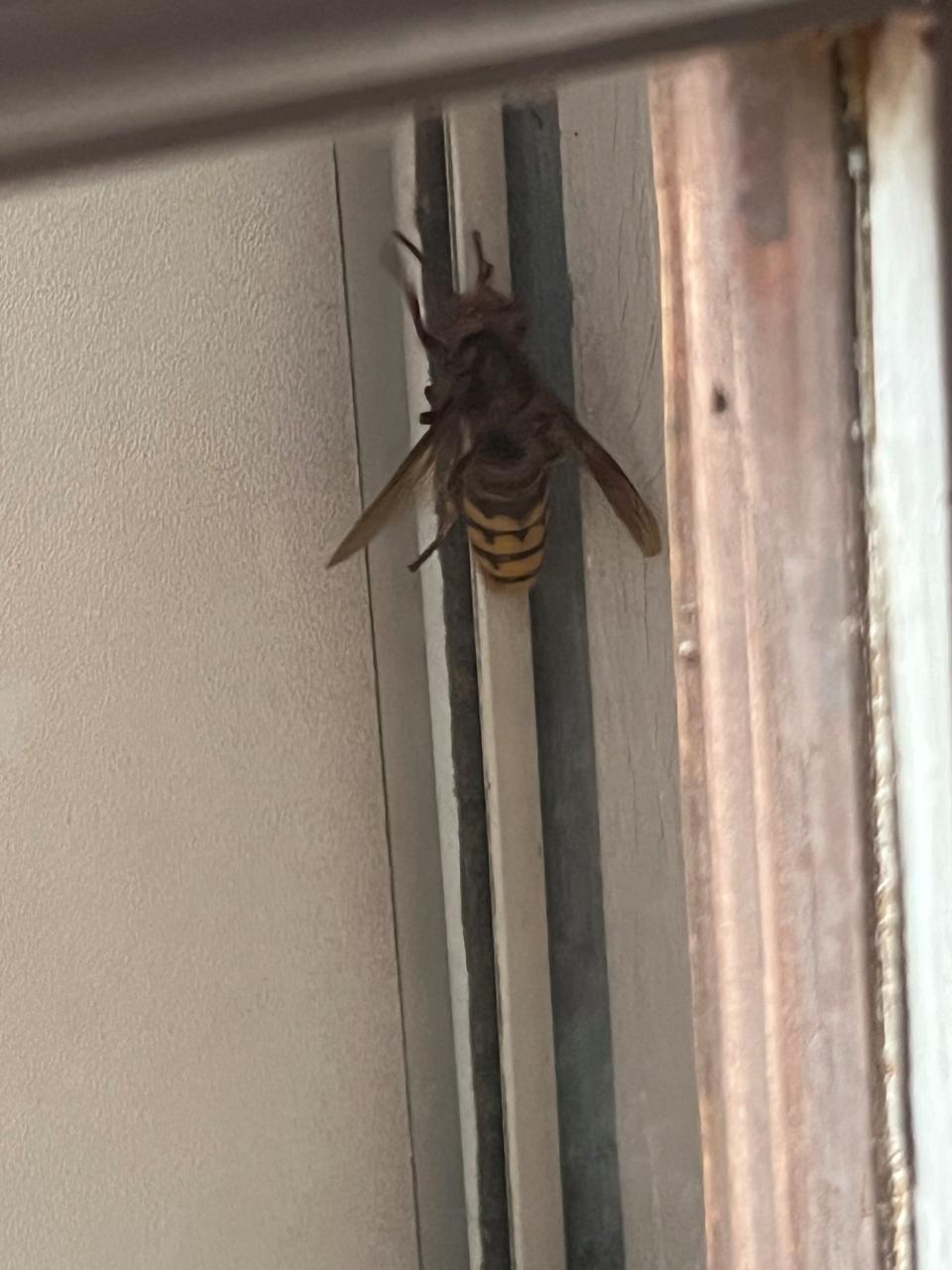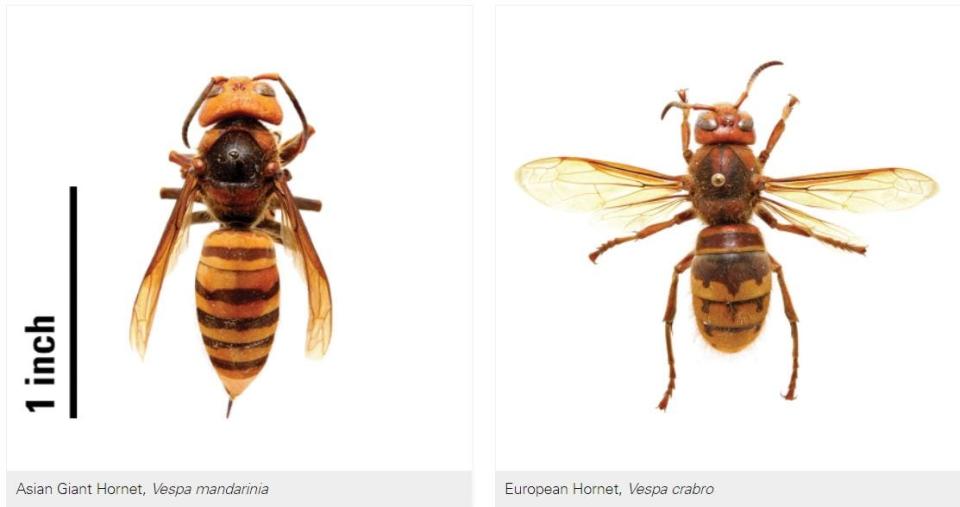Are there 'murder hornets' in North Carolina? What to know about the Asian giants.
“Murder hornets,” a popular and menacing nickname for Asian giant hornets, are the largest species of hornet on Earth. They were first spotted in the U.S. in 2020. Could there be any in North Carolina?
A Graham resident recently submitted the following photo to the Citizen Times, wondering if it might be a "murder hornet." And she wasn't the first.

First of all, were able to confirm that our photographer did not find a "murder hornet." Director of NCSU's Plant Disease and Insect Clinic Matt Bertone told the Citizen Times that the photos in question were photos of a European hornet, which are common in N.C.
Read on for more on Asian giant hornets, also known as northern giant hornets and, of course, as their menacing nickname "murder hornets."
What are murder 'hornets'?
Asian giant hornets are native to Southeast Asia. They were spotted first on this side of the Pacific Ocean in 2019 on Vancouver Island, British Columbia, and first discovered in the U.S. a year later in 2020. Luckily for N.C. residents, however, "murder hornets" have never been found in North Carolina.
Here's some info on where these insects have been found in the U.S., what they look like and how they earned their killer nickname.
More: Is that a murder hornet in your yard? Here's what to do
Why are they called 'murder hornets'?
The nickname "murder hornet" is a misnomer. In fact, National Geographic "canceled" the nickname in a 2022 article, explaining that beyond the public appeal of such a scary title, the main reason behind the fear these insects elicit is simply their painful – but not deadly – sting.
What happens if you get stung by a murder hornet?
Asian giant hornets can't be accurately described by their popular murderous nickname, but it still makes sense to want to avoid them. Their stings are described as extremely painful, like being "stabbed by a red-hot needle."
In another National Geographic article on Asian giant hornets, wasp researcher Soichi Yamane described being stung on the job.
“The pain lasted two days, and my sleep was often disturbed by severe pain," Yamane said.
What does a murder hornet look like?

According to the Washington Invasive Species Council, Asian giant hornets have bodies marked by yellow or orange and black stripes with large yellow or orange heads. Their wingspan is about 3 inches, and they can grow to 1.5 inches in length.
Sydney Crawley, assistant professor in the Department of Entomology and Plant Pathology at N.C. State, provided input on potential lookalikes in previous reporting from the Citizen Times.
“People often confuse the European hornet for Asian giant hornets because they are similar in size and color. However, they are a completely different species and have been in the US since 1840," Crawley said.
Bertone gave similar input in his email response to the Citizen Times.
"This is not a northern giant hornet (Vespa mandarinia; incorrectly called the "murder hornet" by the media), but rather the well-established European hornet (Vespa crabro)," Bertone said. "The European hornet has been in the US for over 150 years and can be common."
Bertone also suggested their blog post on how to differentiate between European hornets and northern giant hornets (also known as Asian giant hornets), and their page on European hornets.
It's important to remember that, while they may have southern lookalikes, Asian giant hornets have not been found in southern states and, as you'll read below, likely never will be.
More: Yellow-legged hornets, murder hornet's relative, found in Georgia, officials want them destroyed
Could murder hornets migrate to the southern states?
Washington State entomologist David Crowder previously told USA TODAY that it is likely impossible for Asian giant hornets to live in most parts of the U.S.
“It is highly unlikely that the hornets could make their way across the entire country," Crowder said. "Much of the habitat in the central United States is completely unsuitable habitat for the hornets, as it is too hot and has too low rainfall. Thus, unless they are moved by humans, it would be nearly impossible for the hornets to make their way across the country on their own.”
Iris Seaton is the trending news reporter for the Asheville Citizen Times, part of the USA TODAY Network. Reach her at [email protected].
This article originally appeared on Asheville Citizen Times: Are murder hornets in NC? Asian giant hornets facts
